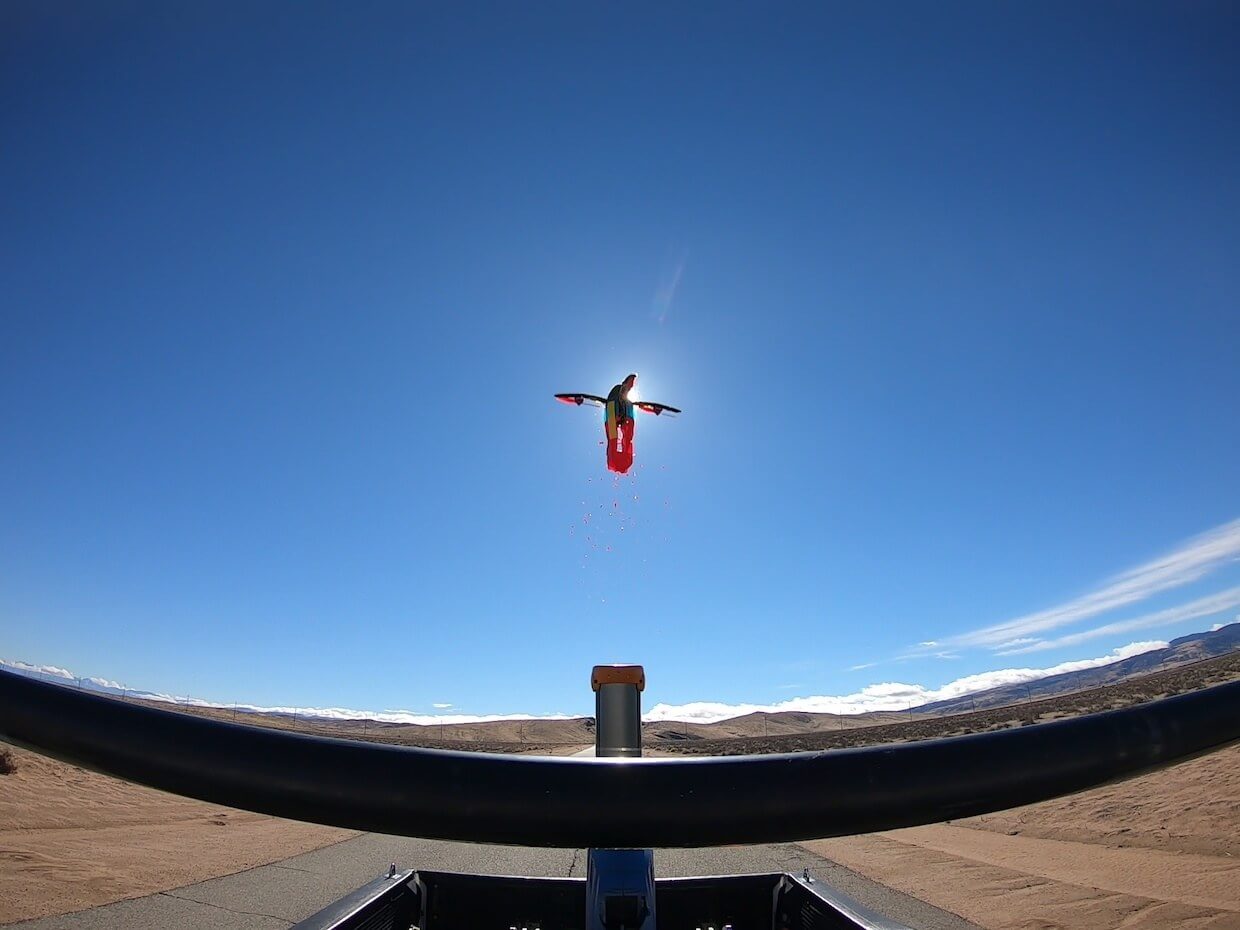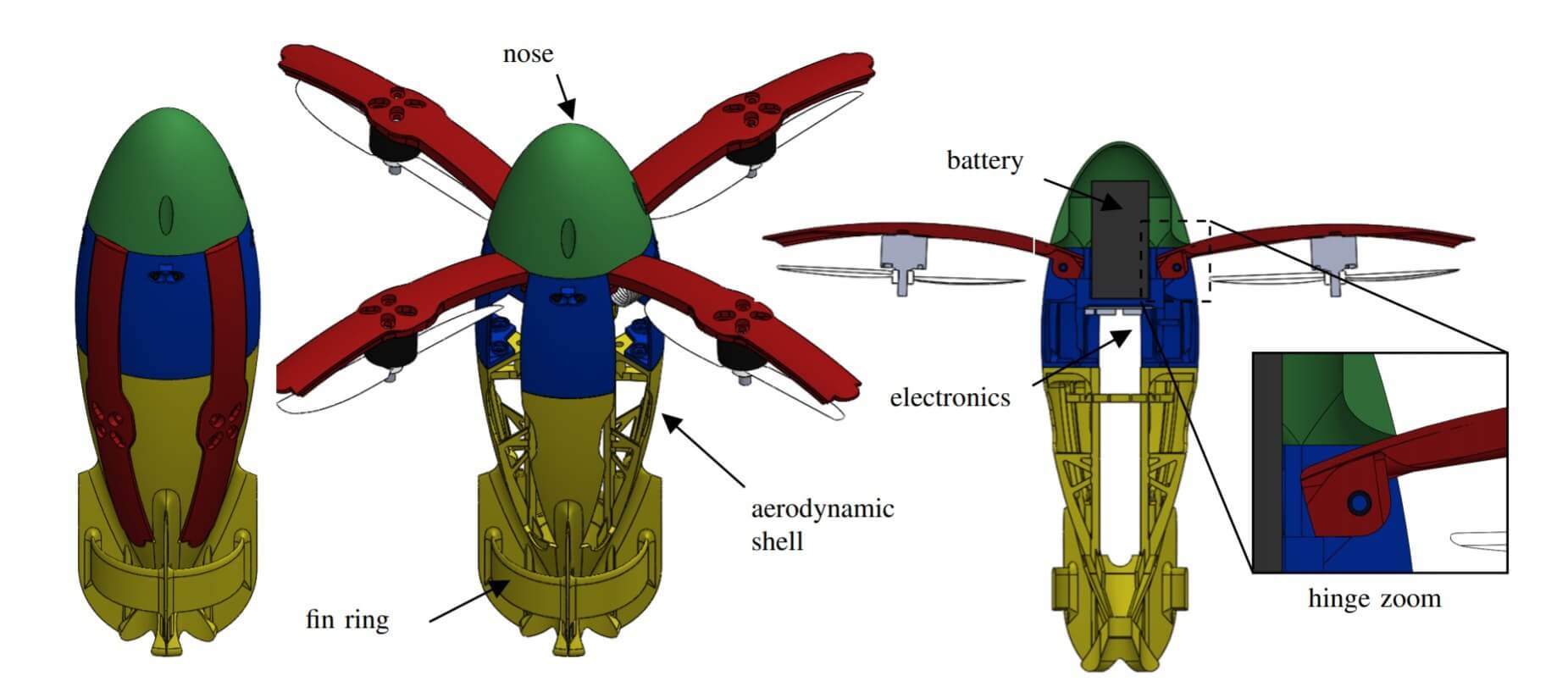In brief: Drone technology is advancing all the time, but one of the problems still being looked at is how to get them up into the air safely in certain scenarios. The potential answer, it seems, is to use a cannon.
The device was created by engineers at Caltech University and NASA's Jet Propulsion Laboratory in California. Called SQUID---an acronym for Streamlined Quick Unfolding Investigation Drone---it looks like a tiny missile during its launch stage.
The SQUID measures just 10.6 inches in length and weighs 1.12 pounds, and the cannon that fires the drone is a pneumatic baseball pitching machine that's been modified. It's able to launch the SQUID at 35 mph, and it can be fired from a stationary position or from a moving vehicle traveling at up to 50 mph.
Less than a tenth of a second after it's launched, the drone's spring-loaded rotor arms open out, and the internal motors give it powered flight.
In a research paper, the team writes that the quadcopter would be perfect for use in crowded environments as the operator can direct the launch path, so the device avoids any collisions.

It's also suggested that the SQUID could have applications in the field of emergency services. It could be used for space exploration, too, where launching it from a rover vehicle is an option. It's noted that NASA is already planning to deploy a powered rotorcraft machine from the Mars 2020 rover. Additionally, the military might be interested in being able to launch surveillance drones from vehicles without them needing to stop.
The SQUID is 3D printable and scalable, though the only issue it might have right now is landing. It has no landing legs, but "can safely land if the bottom touches the ground first at a low speed," at which point it gently topples over.
